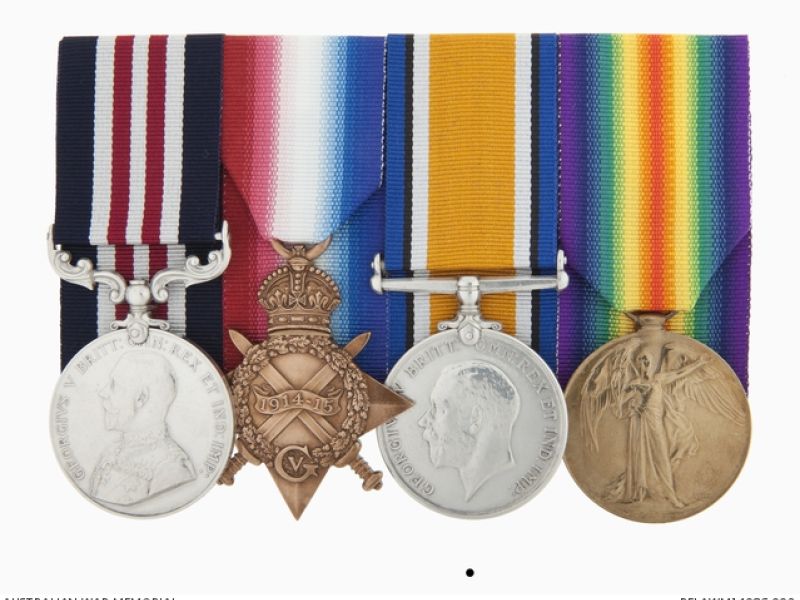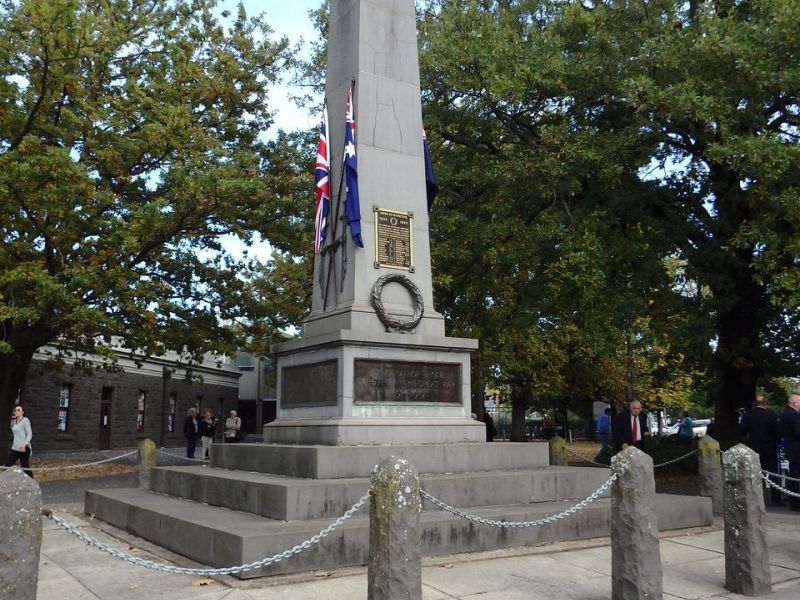Lieutenant Hubert Hume Corney, 21st Battalion, Australian Imperial Force
Hubert Hume Corney was born in 1892 in Wilcannia, New South Wales, the son of Walter Thomas and Rebecca Louisa Corney. The Corney family moved to Kyneton, Victoria, when Corney was a child. Known by his middle name, Hume, after state school he joined the National Bank.
Corney enlisted in the Australian Imperial Force in May 1915. He left Australia in July aboard the transport ship Demosthenes. His mother would farewell five of these transports – as three sons, one daughter, and a son-in-law all left for service overseas.
Hume Corney’s brothers Frank and Charles served with the 26th Battalion and the 101st Howitzer Battery. Their sister Kathleen was a trained nurse, who volunteered in hospitals in London on the condition that if her husband or brothers were wounded, she would be allowed to go off duty. Kathleen’s husband, John Robertson Duigan served with the Australian Flying Corps and earned the Military Cross in an air battle over Villers-Bretonneux.
Hume Corney served with the 24th Battalion on Gallipoli, where he was badly wounded in the leg shortly before the evacuation. After a few weeks in hospital, he proceeded to France. On the Western Front, Hume would earn the Military Medal and his brother Frank the Military Cross when their paths briefly crossed at Pozieres.
After his unit came under heavy fire, Hume volunteered as a stretcher bearer. Frank, coming in from the front lines, had been badly wounded – and then he ran into Hume preparing to lead a search for wounded men. The brothers wrote to their mother about this chance meeting, and Hume sent her his stretcher-bearer armband for safekeeping.
Hume Corney was not meant to be a stretcher-bearer, but he saw work that needed to be done. He carried men across open ground to the dressing station, passing through heavy shellfire. As the citation for his Military Medal states, “He put aside all consideration of personal safety for the comfort and relief of his wounded comrades.”
The French winter of 1916 to 1917 was the coldest in memory, and Hume Corney was hospitalised again with trench fever in February 1917. He returned to his unit at the end of March 1917. His bravery and leadership skills had brought a promotion to lieutenant. He was transferred to the 21st Battalion, which moved north to Flanders, soon to take part in the third Battle of Ypres, or Passchendaele.
On 9 October 1917, Corney led his men during an attack on Broodseinde Ridge. The unit came under heavy fire, and Corney was later reported missing. Believing Hume might be a prisoner of war, his mother repeatedly wrote to General Birdwood and the Australian Red Cross Wounded and Missing Bureau for information. His sister Kathleen searched the hospitals, interviewing every man she could find from the 21st Battalion.
Hume’s commanding officer wrote that Corney was last seen “gallantly leading his men during the attack”. In an official report, this officer added, “He knew how to live, and I feel sure he knew how to die.”
After the war, Corney’s family – his brothers Frank and Charlie; his sister Kathleen; and his brother-in-law Jim – returned to Australia. Frank and Jim had been wounded in action several times.
Corney’s family would hear nothing further until 1920, when his body was recovered and buried at Passchendaele New British Cemetery. He was identified by his paybook in the pocket of his tunic. At the time of his death, Hume Corney had been 25 years old.
After Corney’s body was found, his mother chose his headstone inscription: “He loved Honour more than he feared Death”.
- AWM Roll of Honour https://www.awm.gov.au/collection/R1727571

 Australian War Memorial
Australian War Memorial